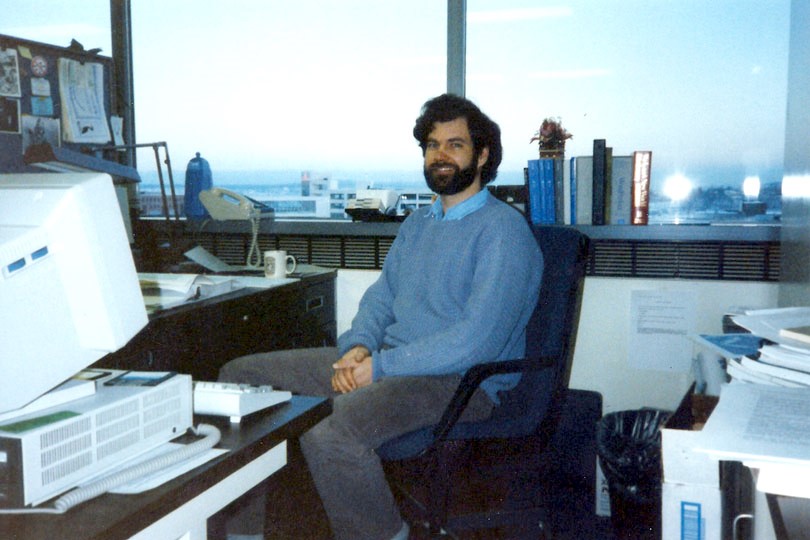Green Watch
Gold Into Dross: Phony Science and the EPA
The story of Alaska’s Pebble Mine: How bureaucrats and environmentalists fought to deny commercial access to the largest undeveloped copper and gold deposit on earth
 EPA Headquarters in Washington, D.C. Image credit: The Tartan. goo.gl/EmAUsn
EPA Headquarters in Washington, D.C. Image credit: The Tartan. goo.gl/EmAUsn

Gold Into Dross
The Importance of Pebble | Phony Science and the EPA
Unscientific Shortcomings | Colluding With the Left
Summary: The Pebble Mine project in Alaska is a critical part of any plan to restore the nation’s independence with regard to strategic minerals. Yet the Environmental Protection Agency, allied with environmentalist groups, has worked to block the project, even resorting to the creation of an imaginary mine, real enough for bureaucrats’ purposes. It’s a story of intrigue, overreach, and unethical behavior by government officials who are supposed to be serving the interests of the American people.
Clean Water Act Invoked to Halt Pebble Mine
Under federal law, an Environmental Impact Assessment (EIA) is required for any proposed project that could have a significant environmental impact on air, land, or water, or on human health and welfare. Clearly, a large mine in sparsely populated country near federal wilderness areas, such as Pebble, would (and should) be required to submit an EIA. Small streams draining the Pebble property eventually flow into Bristol Bay, home to the world’s largest sockeye salmon fishery, though they contribute an inconsequential volume of water compared to all the other drainages into this massive bay.
But in 2010, before Pebble had even considered submitting an application for a mining permit, the EPA used a specific provision of the Clean Water Act known as Section 404(c), to preempt the mine permit application. According to the Act, the Pebble Partnership is entitled to apply for a permit and the Army Corps of Engineers has the responsibility to approve or disapprove the application. However, in a clearly unintended consequence, the EPA veto called into question the fundamental legality of preempting the issuance of a permit before the permit application had been submitted for review. This is a basic requirement under the Act.
How was Section 404(c) used to halt the Pebble Project? According to the EPA, the Act authorizes the U.S. Army Corps of Engineers through Section 404(a) or an approved state through Section 404(h) to issue permits for discharges of dredged or fill material at specified sites in waters of the United States. Section 404(c) further authorizes EPA to restrict, prohibit, deny, or withdraw the use of an area as a disposal site for dredged or fill material if the discharge will have unacceptable adverse effects on municipal water supplies, shellfish beds and fishery areas, wildlife, or recreational areas.
EPA believes it has “veto authority” under Section 404(c), and may initiate a public process at any time to prohibit or restrict the specification by the Army Corps or by a state, for the discharge of dredged or fill material at a particular site.
According to the Clean Water Act, Section 404(c) authority may be exercised before a permit is applied for, while an application is pending, or after a permit has been issued. Because Section 404(c) actions have mostly been taken in response to unresolved Army Corps permit applications, this type of action is frequently referred to as “an EPA veto of a Corps permit.” Although the Army Corps authorizes approximately 68,000 permit activities in the U.S. waters each year, EPA has used its Section 404(c) authority very sparingly, exercising it only thirteen times in the forty plus year history of the Act. Section 404(c) denials were issued eleven times from 1980 to 1991, then none for almost two decades, until Pebble.
Although used sparingly EPA’s authority under Section 404(c) has been justly tempered by the courts. District Courts have overturned such determinations on a variety of project-specific grounds. However, those reversals of EPA’s determinations have not survived the appeal process. Legal opinions vary, but most agree that “avoiding a withdrawal of the waters at issue under 404(c) may be the best plan that the Pebble Partnership has in keeping its project alive. It has been easier for Pebble to defend such a decision in court rather than challenge an adverse decision made by EPA.”
The Strange Mine That Never Existed
EPA claims that their 2014 veto of Pebble under Section 404(c) was based on “scientific evidence” presented in the Bristol Bay Watershed Assessment, commissioned by the EPA in February 2011 and published by the agency in January 2014. This veto purported to draw its authority from the “science” behind the impacts of Pebble’s proposal on Alaska’s Bristol Bay.
However, no mining permits was applied for and therefore no submission of a mine plan design was ever made. But EPA charged a senior biological scientist named Philip North, to design a worst-case scenario fictional open-pit “hypothetical mine” that would have no chance of being approved in a review by any professional mining engineer. In fact, Pebble’s real intentions for mining the deposit and their mine plan design have remained unknown. Nevertheless, North proceeded to design his dangerous hypothetical mine with a maximum deleterious impact on the waters of Bristol Bay.
The Pebble Partnership knew it would be required to file a detailed environmental impact statement for the entire proposed mining operation along with its application. Consequently, the Pebble spent approximately $150 million in a massive study of the biology, ecology, and dynamics of the Bristol Bay watershed.
Incredibly, EPA and Philip North simply ignored this comprehensive repository of information. Both Mr. North and other EPA officials have actually admitted that during the entire time that the Bristol Bay Watershed Assessment was being written (2011-2014), the study was never really intended to provide a scientific foundation for regulatory decision-making.
There’s more to this outrageous tale: While creating his hypothetically poisonous open pit mine, Mr. North, an EPA employee at the time, coached anti-Pebble activists on how to petition EPA to stop the actual mine permit application—then it seems North himself wrote the petitions. When these actions surfaced in early 2013, the U.S. House of Representatives Oversight Committee requested to speak with North about his role at EPA during the Pebble application. His response was to flee the country and turn fugitive. This resulted in a subpoena issued in August 2015 by a federal judge directing Mr. North to appear before the House Committee. The subpoena process finally caught up with North in Australia in January 2016; he was at last deposed in April 2016 by attorneys for the Pebble Partnership and staff attorneys from the House Committee on Science, Space, and Technology.
Nearly ten years of e-mails and internal memos indicate collusion between EPA officials and environmental activists who staunchly oppose Pebble—much of which was produced in discovery. EPA’s Regional Administrator for Alaska, Dennis McLaren, was deposed in 2016 because he was thought to have played some role in Pebble’s application denial. Much has been learned through discovery about EPA handled the Pebble Project.
The weight of mounting evidence from depositions and Freedom of Information Act requests regarding the complete lack of impartiality in EPA’s adjudication of the Pebble Proposal over many years finally reached a critical stage in 2015. Attorneys representing the parent company of the Pebble Partnership (Northern Dynasty Minerals Ltd.) requested EPA’s Inspector General conduct an investigation concerning the Bristol Bay Watershed Assessment. The material produced through legal discovery, and from FOIA requests made to EPA and others up to that time was used to construct a biased narrative. Then, the timeline of EPA activities triggered the IG investigation.
Much more information has been discovered and developed in the past three years, but the arguments made by Richard Swartz, attorney for Northern Dynasty, remain relevant:
EPA employees have been working for years to promote a veto, and now considerable evidence from heavily redacted emails indicate that the impetus for seeking a pre-emptive 404(c) veto of the Pebble Project did not come from federally recognized tribes in Alaska, as EPA has repeatedly claimed, but from agency officials themselves. This evidence, obtained under the Freedom of Information Act from EPA, suggests that EPA officials in Alaska began musing about the potential for a preemptive 404(c) veto of the project, and lining up other federal agencies to support this plan, some two years before the first petition was received from federally recognized tribes.
The heavily redacted emails produced by EPA have provided a glimpse into an unacknowledged EPA initiative, apparently begun by Phil North, to veto the Pebble project, to promote activist support for a veto, and to enlist other federal agencies such as the Fish and Wildlife Service to support a veto (“This is going to happen and it’s going to get bloody. I am looking forward to it!”). This activity began secretly long before EPA received the petition that it claims caused EPA to initiate the Assessment (BBWA). Its full scope is still unknown, and warrants further investigation.
EPA’s routine collaboration with Pebble opponents, while keeping others in the dark (including the Pebble Partnership, mine project supporters, and the general public) shows an agency providing special access and special treatment to Pebble opponents. Emblematic of this collaboration is the transmittal of a letter from the Administrator to Pebble Partnership’s Chief Executive Officer, the only addressee of the letter, only after it was circulated to Pebble opponents.
The Assessment is biased to support a veto and is fundamentally flawed. EPA’s own agenda and its collaboration with mine opponents have produced an Assessment that violates EPA’s own policies. The Assessment is a document written to create fears of calamity without ever assessing the real likelihood of harm to the salmon in Bristol Bay. Data in the report show that the entire mine scenario will occupy about 1/20th of 1 % of the total Bristol Bay watershed, and a similar proportion of its aquatic habitat. Even the vast 400 square mile watershed area surrounding Pebble produces only about one-half of 1 % of the sockeye salmon upon which the Bristol Bay commercial fishery is based.
The Assessment evaluates a mine scenario co-authored by Mr. North (EPA’s principal early advocate for a veto of the Pebble project) who has publicly admitted that he did not include state of the art technology because he assumed that mining companies would not use what is available. This critical flaw was recognized by numerous independent peer reviewers (selected by EPA), who said precisely the opposite-that the permitting process would require much more and better technology than what EPA used for its Assessment. This Assessment uses a mine scenario that fails to meet legal requirements to protect against harm to salmon, by assessing a fictional mine that does not meet modern standards for environmental protection.

Phil North
By ignoring available evidence gathered by Pebble and from public sources, the Assessment authors overstated the presence of salmon living where the mine is assumed to be constructed. It assumes that no mitigation will be available based on a report by avowed mine opponents who represent anti-Pebble activists. This assumption is belied by decades of evidence about the effectiveness of salmon habitat mitigation techniques.
For scientific support, the Assessment uses numerous studies by anti-mine activists. EPA quietly commissioned Peer Reviews of seven studies authored by anti-Pebble activists, presumably in hopes of bolstering their credibility. No studies supportive of the Pebble Project received any such treatment, including the Pebble Partnership’s $150 million contribution of the most comprehensive and relevant environmental data set available on the region. When EPA quietly had seven of those studies peer reviewed, EPA’s own peer reviewers found them to be biased and unreliable, but EPA used them anyway.
EPA manipulated the peer review of the Assessment itself in a way designed to minimize criticism of the Assessment. EPA violated its own standards when, during the first peer review, it unduly restricted the schedule, shielded the peer reviewers from public comments, and then held a closed-door meeting with the peer review panel. During the second peer review, EPA shut out the public entirely, completely violating its own standards for transparency.
For the first peer review, EPA provided a very narrow charge to the Peer Reviewers for their review of the initial watershed assessment draft in 2012, and limited public access to the Peer Review panel to three-minute per-person verbal presentations. EPA met with Peer Reviewers in private, refused to release their full reports on the watershed assessment document and subsequently published a significantly watered down summary report.
Notwithstanding these limitations, the Peer Reviewers gave voice to some very serious criticisms of the watershed assessment, some of which are presented in this submission. For the second draft of the watershed assessment in 2013, EPA provided its charge to Peer Reviewers in private. In fact, no public access to the Peer Reviewers was permitted whatsoever, and EPA recently reported it may publish the final draft of the watershed assessment before any Peer Review input is made public. While EPA’s management of the Peer Review process in 2012 fell well short of the agency’s own guidelines for such processes, the 2013 Peer Review made an open mockery of them.
In summary, Section 404(c) of the Clean Water Act was used to halt the Pebble mine from moving forward. Meanwhile, the Bristol Bay Watershed Assessment was used as a weapon in an attempt to kill the project—a botched assassination lent legitimacy as the BBWA, according to EPA, is supposedly based on “science.” This mine plan fabrication is an egregious example of federal agency deception and distortion of “science” reported in a falsely “scientific assessment”—which has done more damage to the Pebble Project, and the economy of Alaska, than any other documentation produced before or since.
In the next installment of “Gold Into Dross,” we examine the scientific shortcomings that make the EPA’s hypothetical mine a useless comparison with Pebble Mine.



